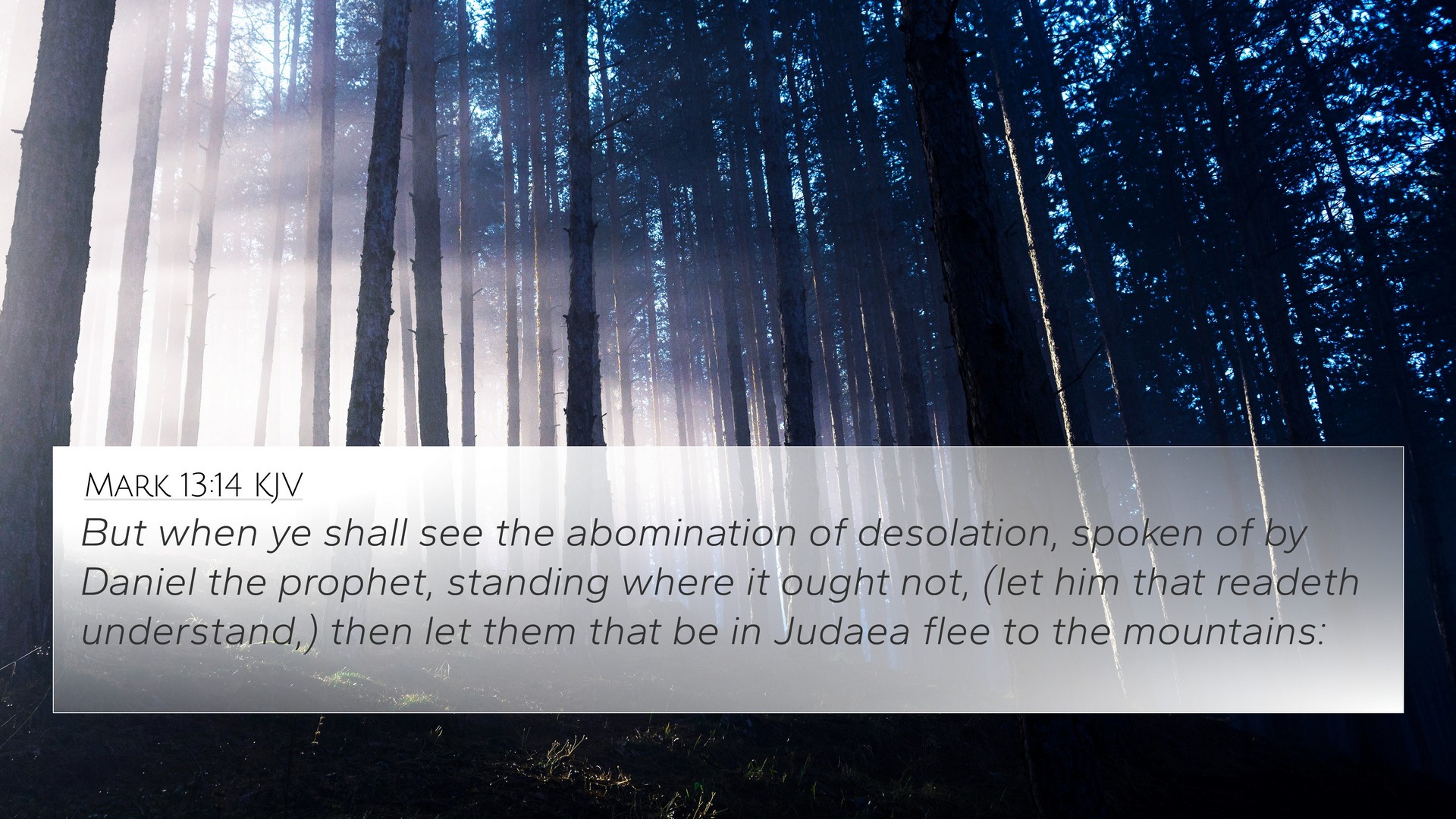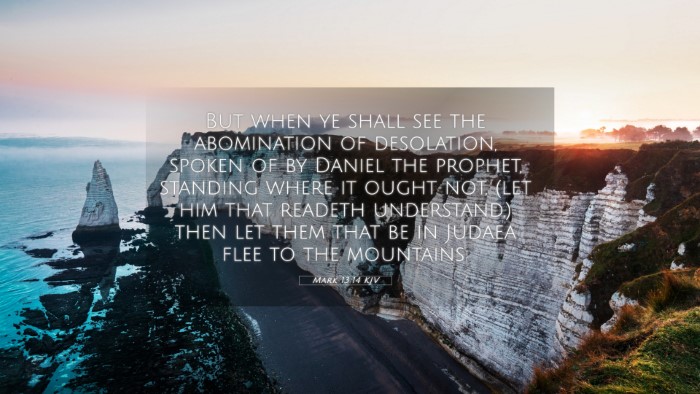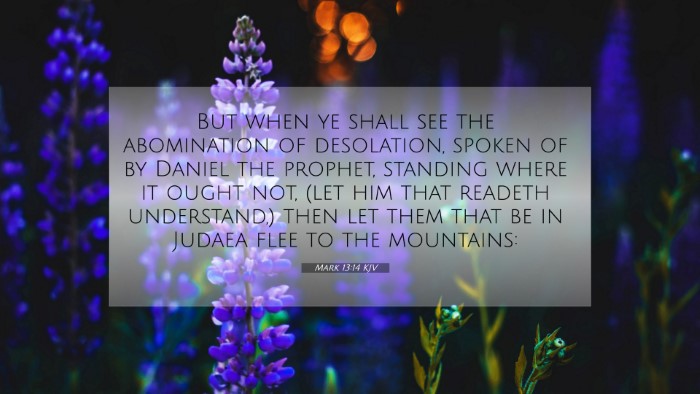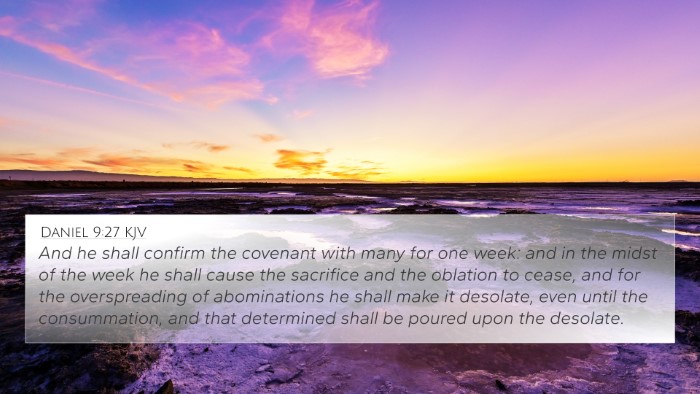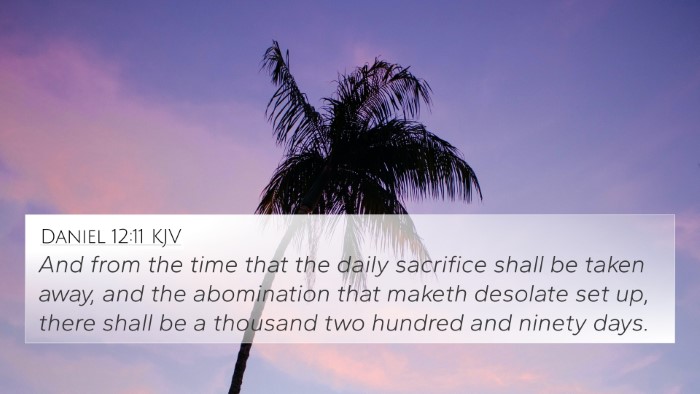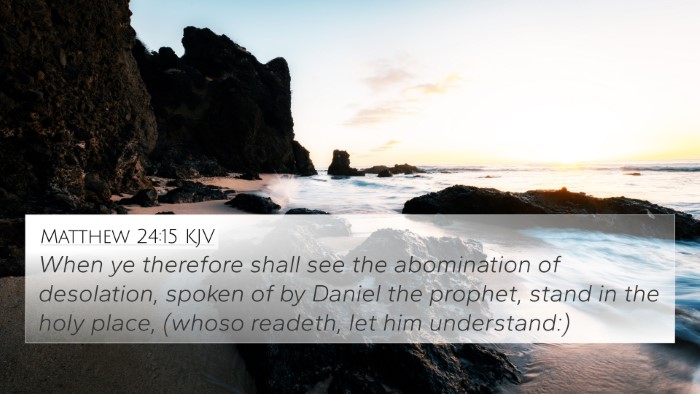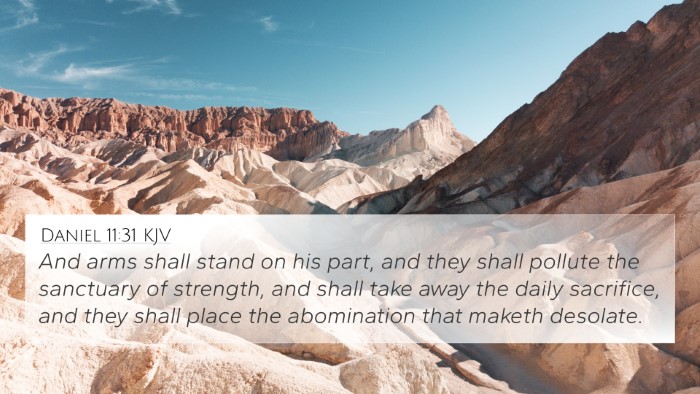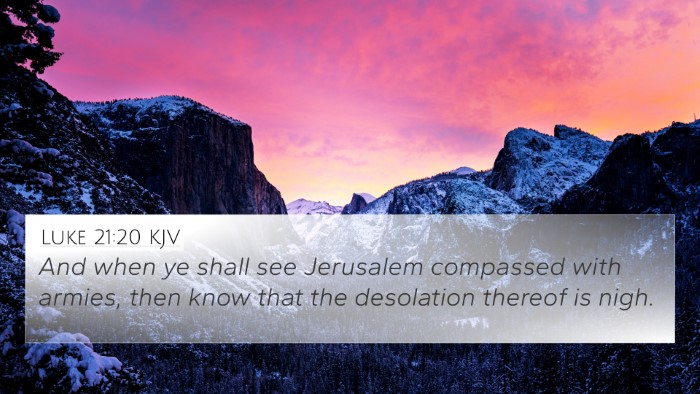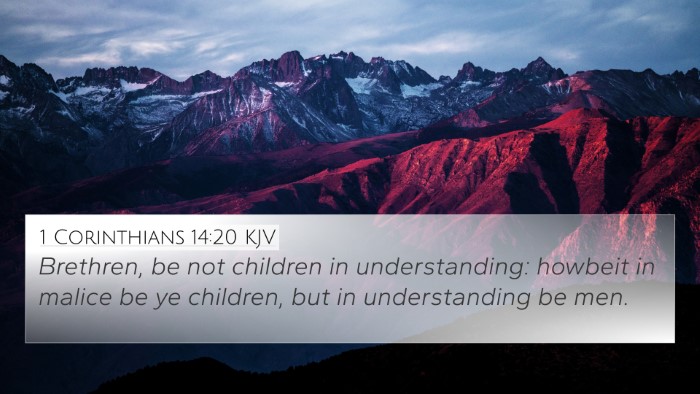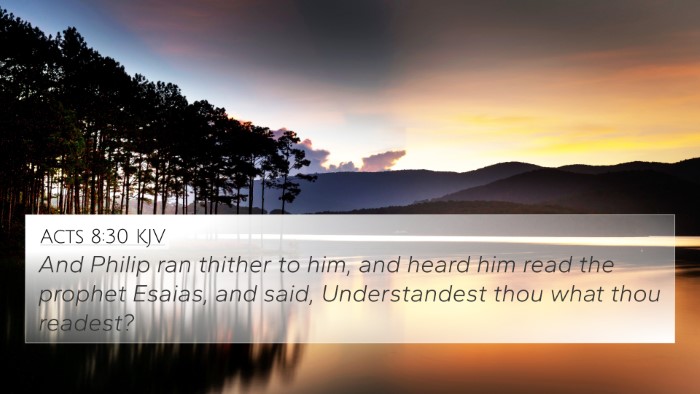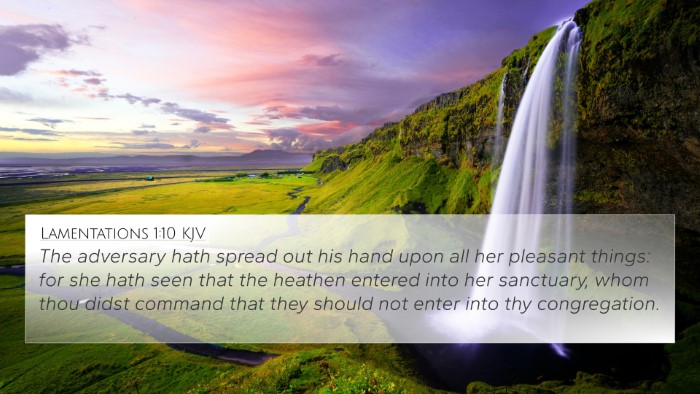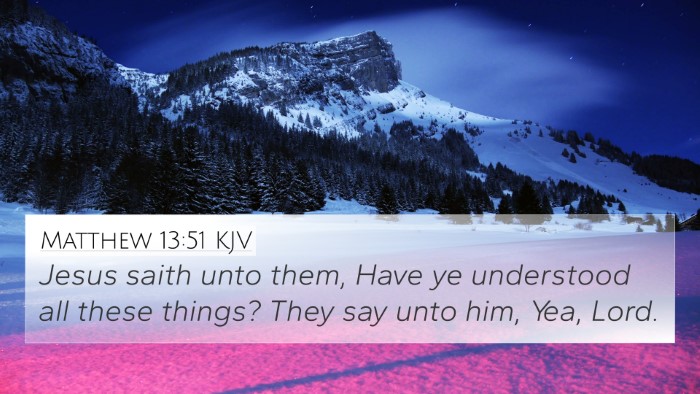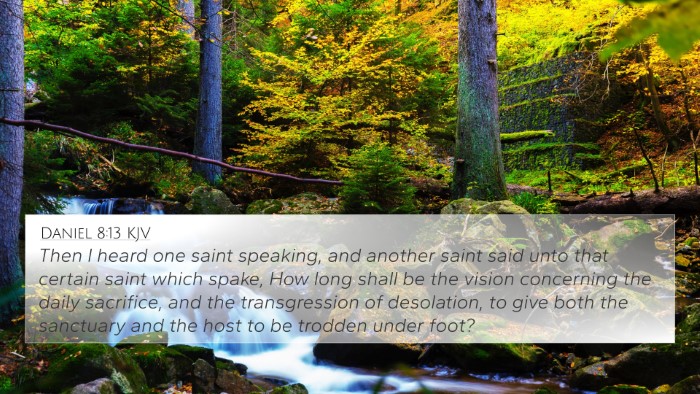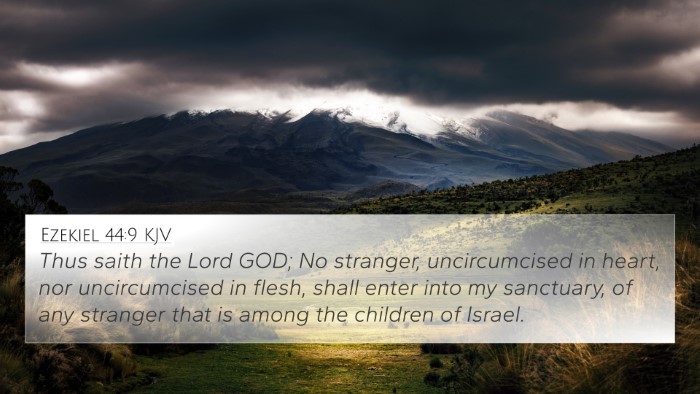Understanding Mark 13:14
Mark 13:14 states: "But when you see the abomination of desolation standing where it should not be (let the reader understand), then let those who are in Judea flee to the mountains."
Summary and Interpretation
This verse is part of Jesus' prophetic discourse about the destruction of the Temple and the signs of the end times. The phrase "abomination of desolation" refers to a prophetic warning about impending destruction and the desecration of holy places.
Key Themes
- Destruction and Judgment: The abomination signals a time of great trouble and judgment.
- Urgency of Response: Jesus emphasizes the need for a swift reaction to this sign.
- Spiritual Insight: The added note "let the reader understand" invites deeper reflection on prophetic fulfillment.
Commentary Insights
Matthew Henry's Commentary
Matthew Henry notes that the "abomination of desolation" may refer to the desecration of the Temple by foreign powers, particularly seen in the actions of Antiochus Epiphanes and later the Romans. He emphasizes the seriousness of heeding this warning and the spiritual implications for the faithful.
Albert Barnes' Commentary
Albert Barnes discusses how this phrase originally pertains to the desecration of the Temple. He stresses the need for believers in Judea to take immediate action, highlighting the urgency of spiritual preparedness amidst impending crisis.
Adam Clarke's Commentary
Adam Clarke expands upon the historical context, linking this prophecy to significant events of both the Old and New Testaments. He emphasizes the importance of understanding prophetic literature and encourages readers to engage actively with biblical teachings.
Bible Cross-References
Mark 13:14 connects with several key biblical passages, enhancing our understanding through cross-referencing:
- Daniel 9:27: Discusses a covenant and the cessation of sacrifice, directly related to the abominations mentioned.
- Matthew 24:15: Parallel passage where Jesus refers to the same abomination and invites a similar response.
- Luke 21:20: Further insight into the siege of Jerusalem as a fulfillment of this prophecy.
- Daniel 11:31: Historical grounding of the abomination as it relates to the actions of oppressive rulers.
- Revelation 13:14: Discusses the end times and the image of the beast, mirroring themes of desecration and worship.
- Jeremiah 7:30: God's warning about the forsaking of His temple and prompt for repentance.
- Matthew 24:16-20: Advises immediate action during tribulation, echoing the urgency Jesus presents.
Thematic Connections
The verse highlights an important theme of warning and preparedness found throughout the scriptures, especially regarding eschatological events.
Practical Application
As believers today contemplate Mark 13:14, it encourages a proactive faith that remains watchful and prepared for spiritual challenges. The call to "flee to the mountains" can be metaphorically understood as seeking refuge in God's presence and wisdom amidst turmoil.
Tools for Bible Cross-Referencing
To deepen understanding and conduct a comparative Bible verse analysis, consider utilizing the following tools:
- Bible Concordance: A valuable resource for identifying how terms and themes are woven through scripture.
- Bible Cross-Reference Guides: These guides assist in navigating the links between biblical texts.
- Cross-Reference Bible Study Methods: Techniques tailored for studying the interconnectedness of scripture.
Engaging with Scripture
By understanding and using biblical cross-references effectively, believers can enrich their study, gaining insights into how different verses relate and enhance one another. This method is crucial for sermon preparation, personal reflection, and community discussions.
Conclusion
Mark 13:14 serves as a profound reminder of vigilance in faith amidst uncertainties. Through careful study of related scriptures and applying commentaries, believers can find encouragement and clarity, making the connections between biblical texts a vital part of their spiritual journey.
